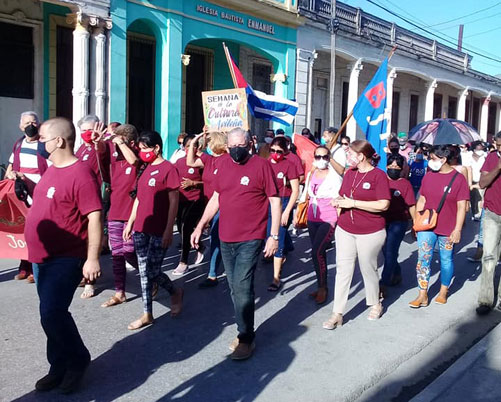
Ciego de Ávila Culture Week
With the traditional parade from Alameda de los Locutores to the central José Martí park, the celebrations began in Ciego de Ávila for the Week of Culture, dedicated on this occasion to the 145th anniversary of its municipality.
Illustrious sons of the town, personalities from Science, Culture, Sports, Economy, Education and the rest of the sectors of society came to honor the historical foundation of the provincial capital.
The celebrations, which will last until Friday, March 27, will also be dedicated to the 30th anniversary of the founding of the Historical Archive and to the work of the outstanding historian and researcher José Martín Suárez Álvarez.
Ángel Cabrera Sánchez, historian of the city, referred to the meanings of the municipality, from its origins, and how much transcends the identity of the town.
Like every year, culture, from its artistic speeches, will accompany the celebration with presentations by local groups, exhibitions in art galleries and demonstrations of the community work carried out by the José Martí brigade of art instructors.
Indistinctly, as part of the festivities, two of the most important musical events that the territory hosts will take place, Trovarte 2022 and the Jazz Center Festival.
Santa Masiel Rueda Morenos, president of the Hermanos Saíz Association in the province and main organizer of the national meeting of young troubadours, explained that Trovarte was conceived for 17 years, precisely, to enrich the activities that take place during the Week of Culture.
The Jazz Centro Festival will be taking place from March 23 to 27, and it will bring together defenders of this genre from all over the country.
Ciego de Ávila was consolidated in the 20th century, with important buildings of eclectic architecture: wide portals, richly decorated bars and a varied typology of columns and arches, which distinguish it from the rest of the Cuban cities.




